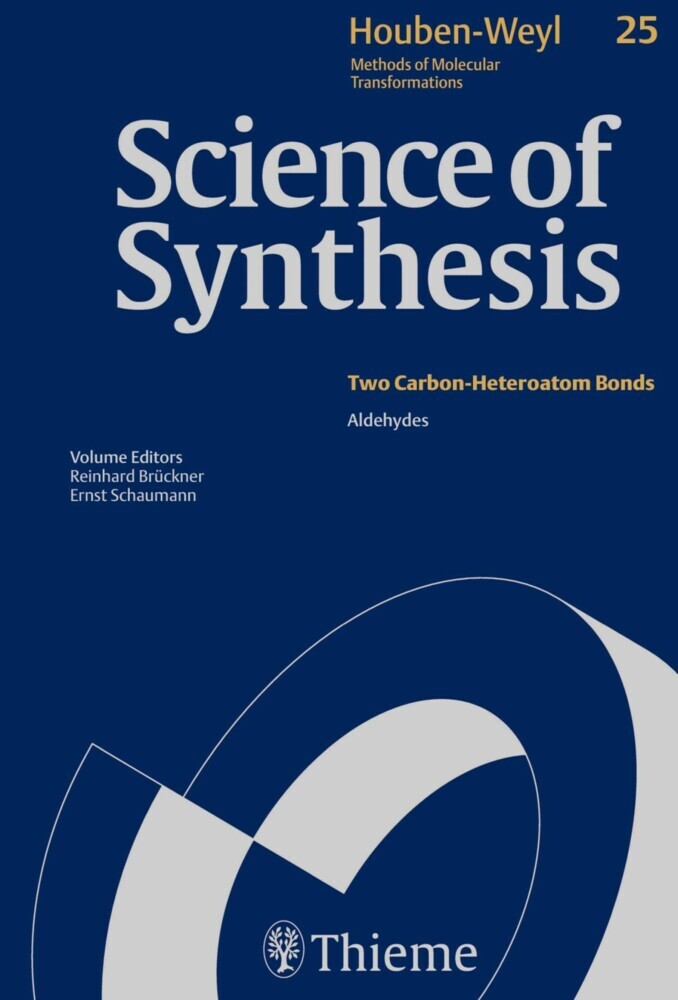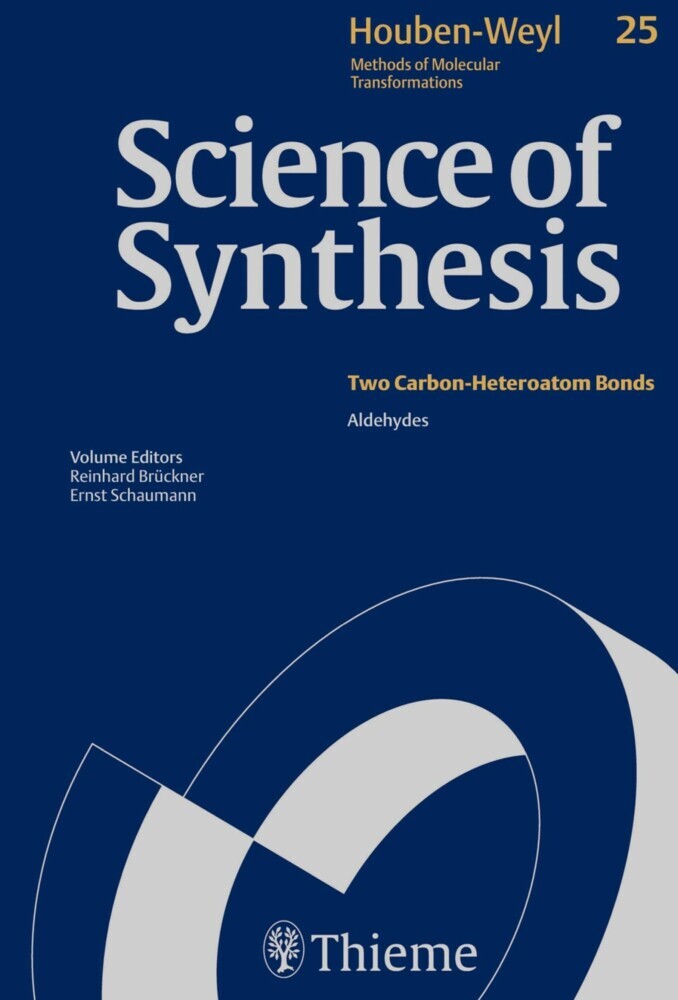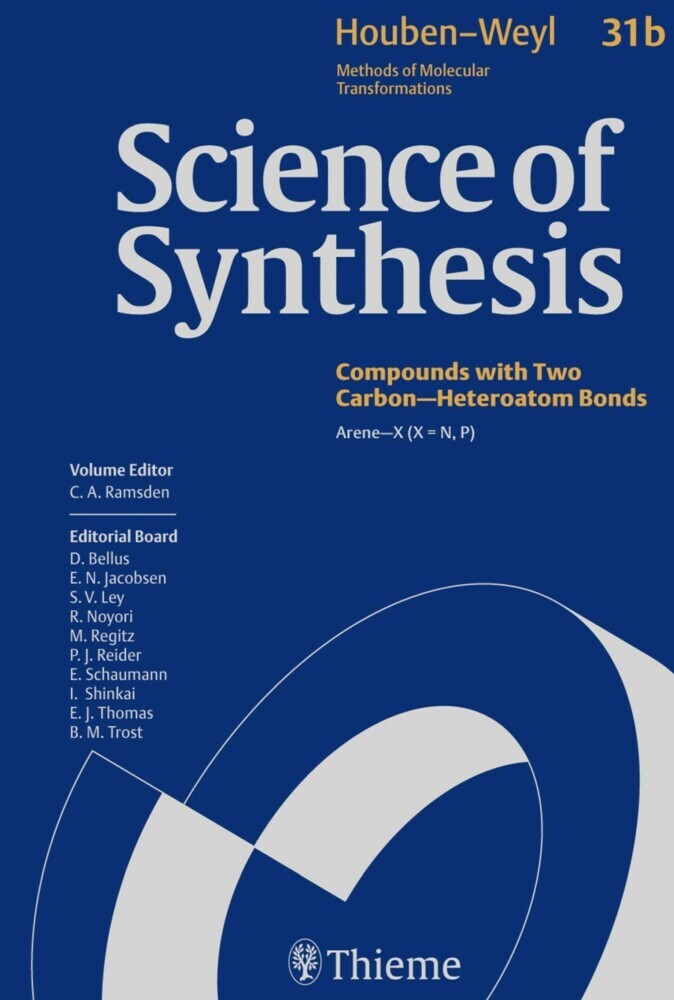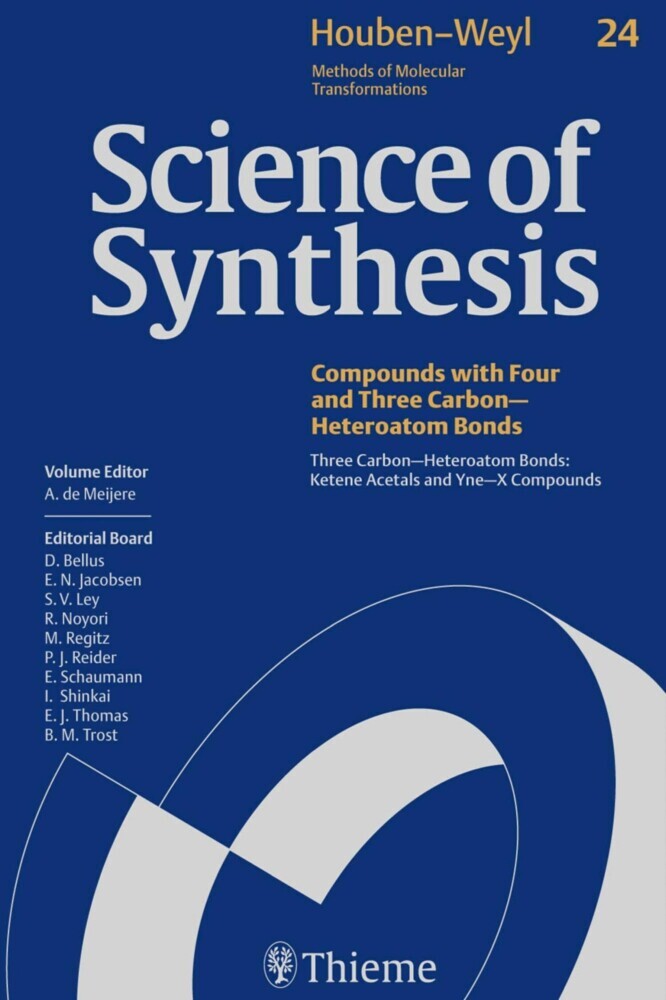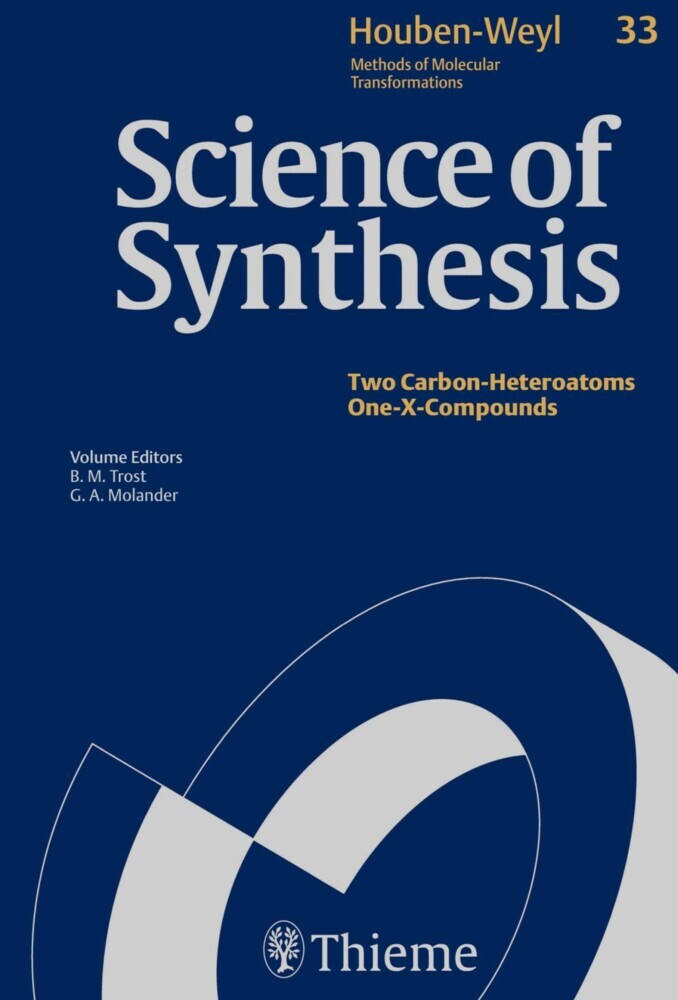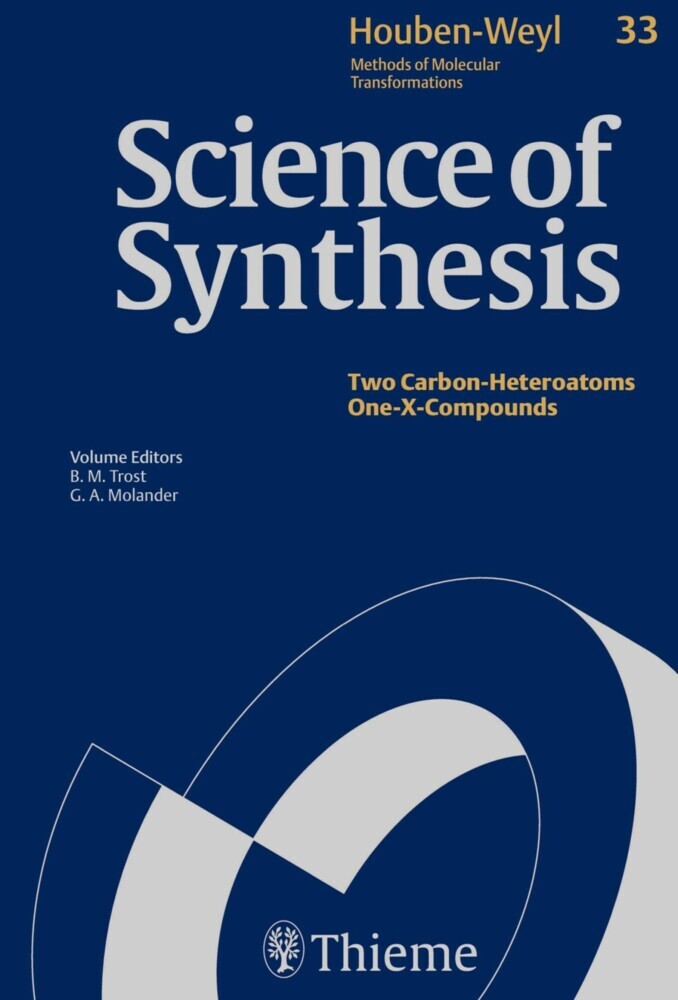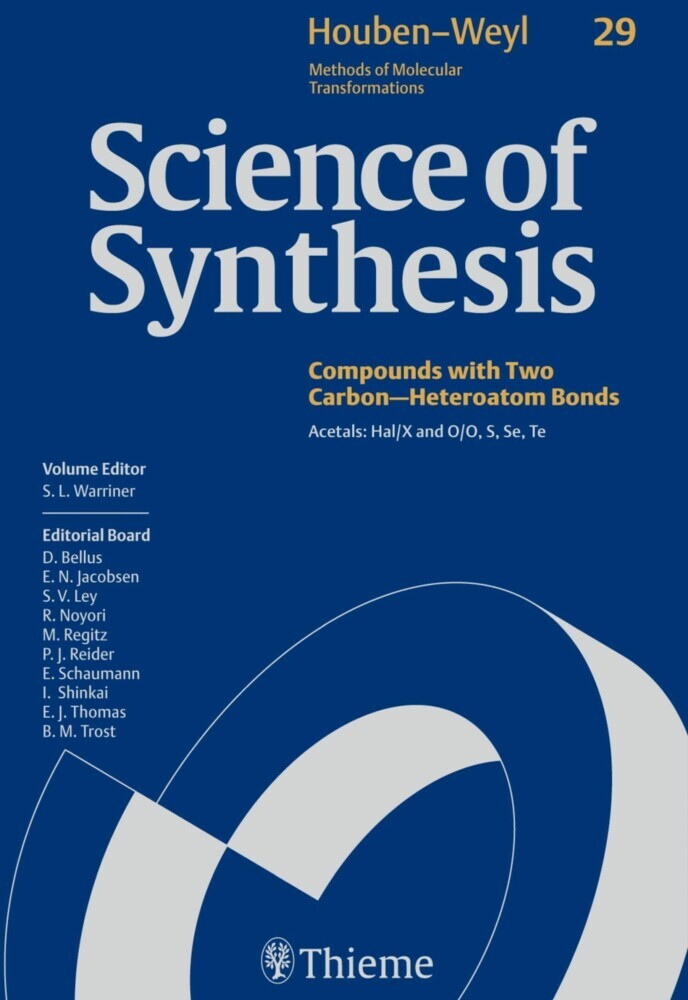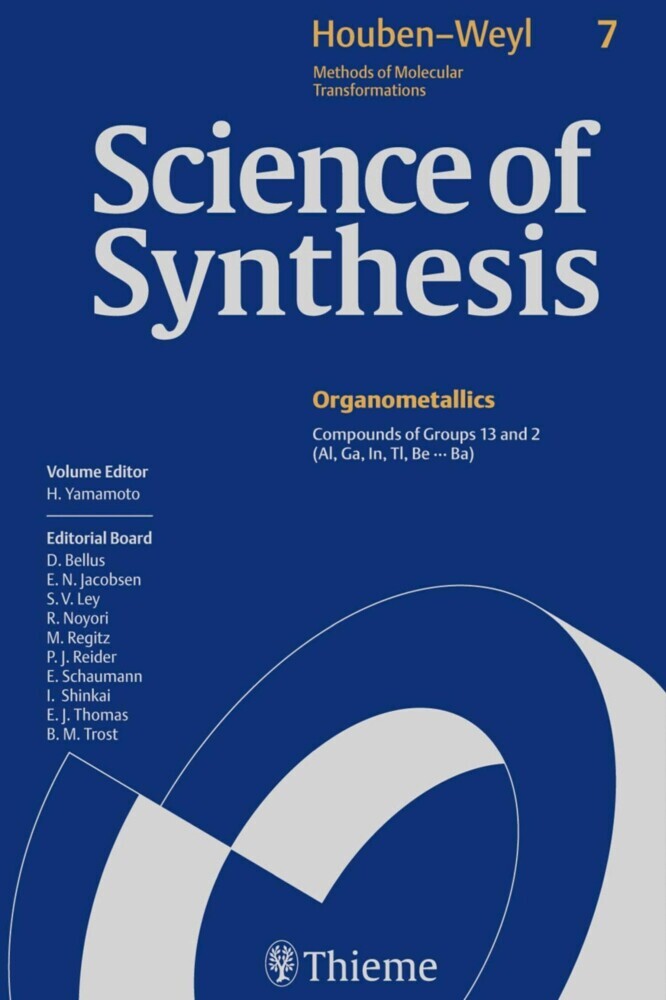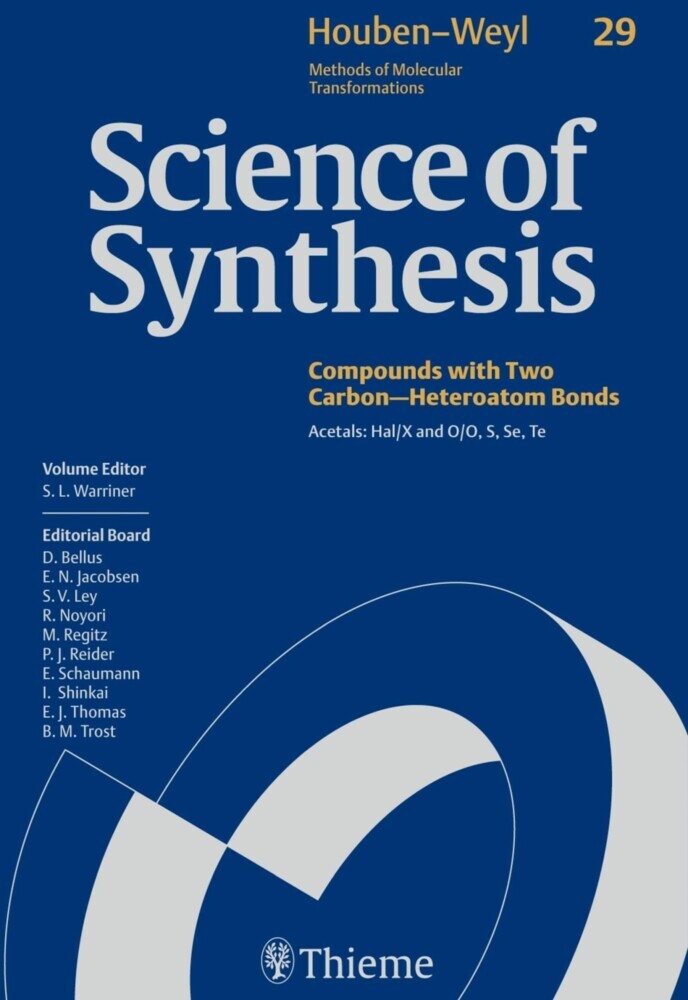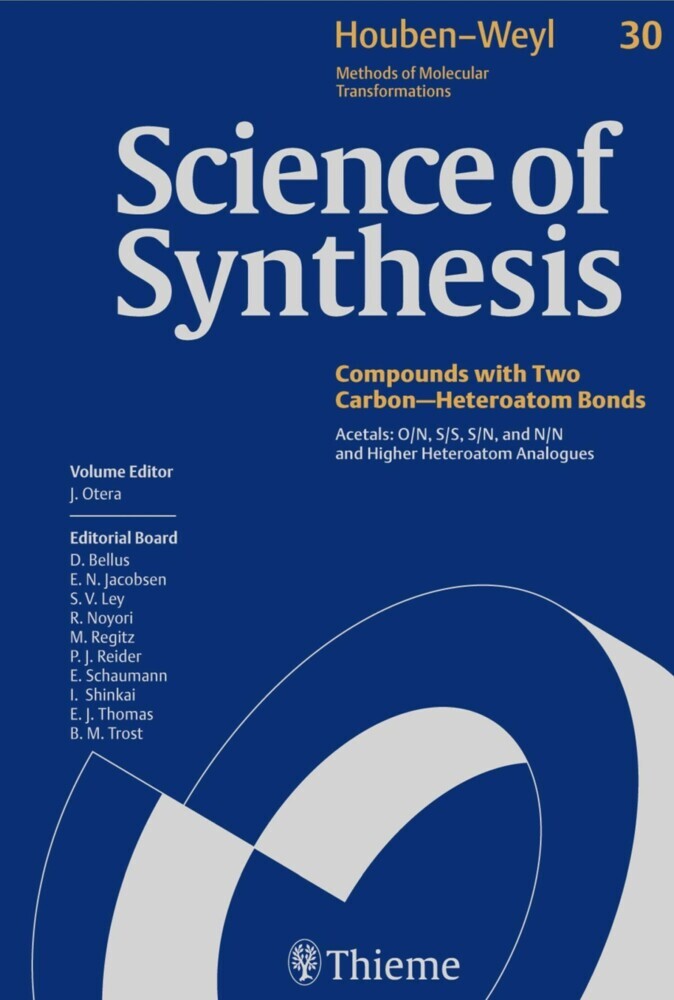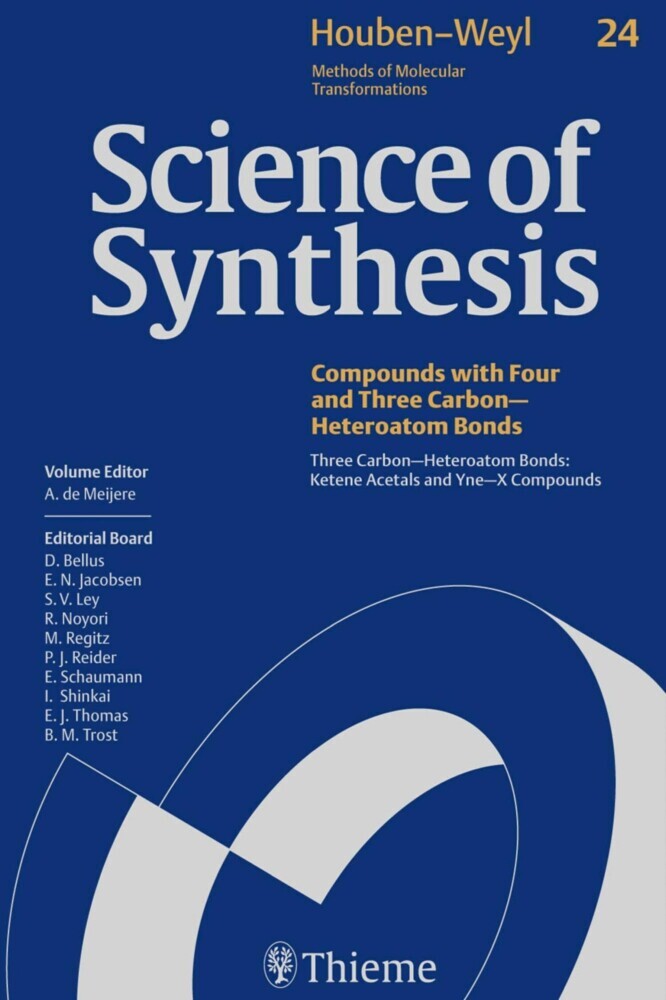Science of Synthesis: Houben-Weyl Methods of Molecular Transformations Vol. 25
Aldehydes
Science of Synthesis: Houben-Weyl Methods of Molecular Transformations is the entirely new edition of the acclaimed reference series Houben-Weyl, the standard synthetic chemistry resource since 1909. This new edition is published in English and will comprise 48 volumes published between the years 2000 and 2008.
Science of Synthesis is a quality reference work developed by a highly esteemed editorial board to provide a comprehensive and critical selection of reliable organic and organometallic synthetic methods. This unique resource is designed to be the first point of reference when searching for a synthesis strategy.
- Contains the expertise of presently 400 leading chemists worldwide
- Critically evaluates the preparative applicability and significance of the synthetic methods
- Discusses relevant background information and provides detailed experimental procedures
For full information on the Science of Synthesis series, visit the Science of Synthesis Homepage
1;Science of Synthesis - Volume 25: Aldehydes;1 1.1;Title page;3 1.2;Imprint;5 1.3;Preface;6 1.4;Volume Editor's Preface;8 1.5;Overview;10 1.6;Table of Contents;14 1.7;Introduction;34 1.8;25.1 Product Class 1: Aliphatic and Alicyclic Aldehydes;50 1.8.1;25.1.1 Synthesis by Oxidative Cleavage;50 1.8.1.1;25.1.1.1 Method 1: Oxidative Cleavage of Alkenes;50 1.8.1.1.1;25.1.1.1.1 Variation 1: By Ozonolysis;50 1.8.1.1.2;25.1.1.1.2 Variation 2: By Dihydroxylation/Glycol Cleavage;52 1.8.1.2;25.1.1.2 Method 2: Oxidative Cleavage of Glycols and Related Compounds;53 1.8.1.2.1;25.1.1.2.1 Variation 1: Using Lead(IV) Acetate;53 1.8.1.2.2;25.1.1.2.2 Variation 2: Using Sodium Periodate;54 1.8.2;25.1.2 Synthesis by Oxidation;58 1.8.2.1;25.1.2.1 Method 1: Oxidation of Halides and 4-Toluenesulfonates;58 1.8.2.1.1;25.1.2.1.1 Variation 1: Oxidation with Dimethyl Sulfoxide and Related Species;58 1.8.2.1.2;25.1.2.1.2 Variation 2: Oxidation with N-Oxides;59 1.8.2.2;25.1.2.2 Method 2: Oxidation of Primary Alcohols;60 1.8.2.2.1;25.1.2.2.1 Variation 1: Oxidation with Metal Salts in High Oxidation States;61 1.8.2.2.2;25.1.2.2.2 Variation 2: Oxidation with Activated Dimethyl Sulfoxide and Related Species;66 1.8.2.2.3;25.1.2.2.3 Variation 3: Oxidation with Hypervalent Iodine Reagents;71 1.8.2.2.4;25.1.2.2.4 Variation 4: Oxidation of Alcohols with a Nitroxide and a Co-oxidant;74 1.8.2.2.5;25.1.2.2.5 Variation 5: Oxidation with Oxygen and a Catalyst;76 1.8.2.3;25.1.2.3 Method 3: Oxidation of Primary Silyl Ethers;77 1.8.2.4;25.1.2.4 Method 4: Oxidation of Sulfur Compounds;79 1.8.2.5;25.1.2.5 Method 5: Oxidation of Amines;81 1.8.2.6;25.1.2.6 Method 6: Oxidation at the Terminal Carbon Atom of an Alk-1-ene;82 1.8.2.6.1;25.1.2.6.1 Variation 1: Oxidation of Terminal Alkenes with Oxygen under Palladium Catalysis;83 1.8.2.6.2;25.1.2.6.2 Variation 2: Hydroboration of Alk-1-enes and Subsequent Oxidation of the Boranes;83 1.8.3;25.1.3 Synthesis by Isomerization;90 1.8.3.1;25.1.3.1 Method 1: Transition-Metal-Catalyzed Isomerization of Allylic Alcohols;90 1.8.3.1.1;25.1.3.1.1 Variation 1: Enantioselective Transition-Metal-Catalyzed Isomerization of Allylic Alcohols;92 1.8.3.2;25.1.3.2 Method 2: Transition-Metal-Catalyzed Isomerization of Allylic Amines and Subsequent Hydrolysis;92 1.8.3.2.1;25.1.3.2.1 Variation 1: Enantioselective Transition-Metal-Catalyzed Isomerization of Allylic Amines and Subsequent Hydrolysis;94 1.8.4;25.1.4 Synthesis by Reduction or by Reduction Followed by Hydrolysis;98 1.8.4.1;25.1.4.1 Reduction of Carboxylic Acid Chlorides;99 1.8.4.1.1;25.1.4.1.1 Method 1: Rosenmund Reduction;100 1.8.4.1.2;25.1.4.1.2 Method 2: Reduction Using Complex Aluminum Hydrides;100 1.8.4.1.3;25.1.4.1.3 Method 3: Reduction Using Complex Borohydrides;102 1.8.4.1.4;25.1.4.1.4 Method 4: Reduction Using Triethylsilane;103 1.8.4.1.5;25.1.4.1.5 Method 5: Reduction Using Tributyltin Hydride;103 1.8.4.2;25.1.4.2 Reduction of Carboxylic Acids;104 1.8.4.2.1;25.1.4.2.1 Method 1: Reduction Using Complex Aluminum Hydrides;104 1.8.4.2.1.1;25.1.4.2.1.1 Variation 1: Using Lithium Aluminum Hydride;104 1.8.4.2.1.2;25.1.4.2.1.2 Variation 2: Using Lithium Bis(N-methylpiperazinyl)aluminum Hydride;105 1.8.4.2.1.3;25.1.4.2.1.3 Variation 3: Using Lithium Tri-tert-butoxyaluminum Hydride;106 1.8.4.2.2;25.1.4.2.2 Method 2: Reduction Using Boranes;108 1.8.4.2.3;25.1.4.2.3 Method 3: Reduction Using Formic Acid or Formates;109 1.8.4.2.4;25.1.4.2.4 Method 4: Reduction Using Alkali Metals;109 1.8.4.2.5;25.1.4.2.5 Method 5: Reduction Using Two-Step, One-Pot Procedures;109 1.8.4.2.5.1;25.1.4.2.5.1 Variation 1: Reduction of Carboxylic Acids through Silyl Esters;109 1.8.4.2.5.2;25.1.4.2.5.2 Variation 2: Reduction of Carboxylic Acids through an Imidazolide;110 1.8.4.2.5.3;25.1.4.2.5.3 Variation 3: Reduction of Carboxylic Acids through a Triazinyl Ester;111 1.8.4.2.5.4;25.1.4.2.5.4 Variation 4: One-Pot Reduction--Oxidation of Carboxylic Acids;112 1.8.4.3;25.1.4.3
| ISBN | 9783131719911 |
|---|---|
| Artikelnummer | 9783131719911 |
| Medientyp | E-Book - PDF |
| Copyrightjahr | 2014 |
| Verlag | Georg Thieme Verlag KG |
| Umfang | 902 Seiten |
| Sprache | Englisch |
| Kopierschutz | Digitales Wasserzeichen |

